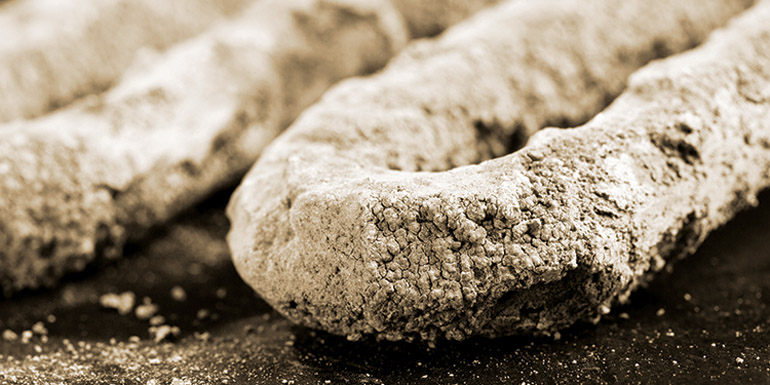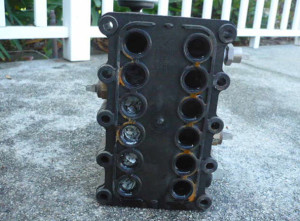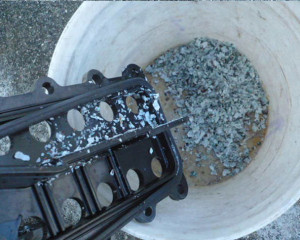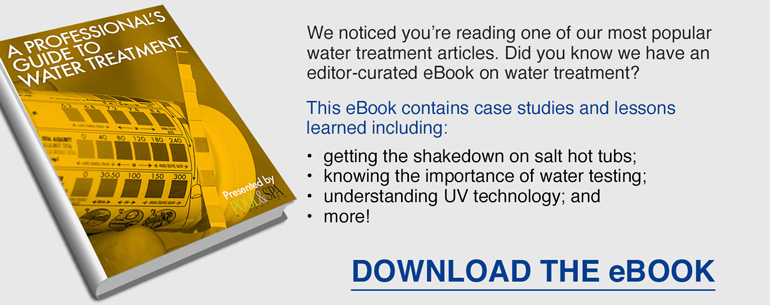
By Terry Arko
Calcium phosphate scale is a new problem creeping into the swimming pool and hot tub industry. However, the problem has long been recognized in the boiler industry. Calcium phosphate scale became prevalent when reverse osmosis (RO) technology was widely applied to municipal waste water. Due to recent water shortages, municipal waste water recycling and reuse has become a major area where this water purification technology has become prevalent. As such, preventative actions have become commonplace for commercial boiler water and now, it seems, it may become standard for treating swimming pool and hot tub water, as well.
One of the main reasons for the increased appearance of calcium phosphate scale in swimming pools and hot tubs could be the more frequent use of metal remover products, which contain polyphosphonates, 1-Hydroxethylidene-1, 1-Diphosphonic Acid (HEDP). When these metal removal products are used in pools and/or hot tubs with high calcium levels, there is a chance it may lead to calcium phosphate scale formation—especially at the heat source. Not only can scale cause cloudy water, but it can also damage equipment, particularly heater exchangers.
Another possible factor could be a high level of orthophosphates in the source water, which can cause calcium phosphate scale formation on heat exchangers as calcium precipitates more readily in higher water temperatures.
What is calcium phosphate scale?
Calcium phosphate scale occurs when orthophosphate combines with calcium in pool/hot tub water, particularly in the presence of heated water. The result is an insoluble white scale, which is difficult to remove. Further, if left untreated, it can lead to the destruction of heat exchangers.

Calcium scale buildup is typically more problematic in hot tubs due to the higher water temperature. Scale forms when calcium attaches to carbonate in the water; calcium carbonate becomes more insoluble at higher water temperatures. Further, due to increased temperatures and aeration, the hot tub’s evaporation rate is rapid. This leads to an increased buildup of total hardness and total dissolved solids (TDS).
When water evaporates, pure water leaves, while all other contaminants are left behind. That said, scaling in a hot tub can be especially difficult to treat once it occurs and, if not caught in time, can damage the surface finish. This is not the only concern as calcium scale also causes discomfort to bathers and can even cause skin abrasions and rashes. Further, with the advent of salt systems, high phosphate levels and the formation of calcium phosphate scale on generator cells can cause the system to fail and not keep up with sanitizer demand.
once it occurs and, if not caught in time, can damage the surface finish. This is not the only concern as calcium scale also causes discomfort to bathers and can even cause skin abrasions and rashes. Further, with the advent of salt systems, high phosphate levels and the formation of calcium phosphate scale on generator cells can cause the system to fail and not keep up with sanitizer demand.
It is much easier and more cost-effective to prevent water problems from the start than it is to treat them after they have occurred. In the case of scale buildup in a hot tub, for example, once it has formed, the only thing left to do is grab a mild scale remover and start scrubbing. (Phosphate scaled cells or surfaces are best cleaned with a mild acid solution.)
Unfortunately, in today’s fast paced world, many key elements of proper water management are simply overlooked. For instance, checking calcium hardness and phosphate levels is a step many operators tend to skip. This is a mistake for two important reasons:
- Low calcium hardness can result in a corrosive environment that is harmful to bathers, equipment, and pool/hot tub surfaces.
- High calcium hardness can result in cloudy water, stains, and scale. High phosphate content in source water, or buildup in the hot tub, can lead to further scale issues.








